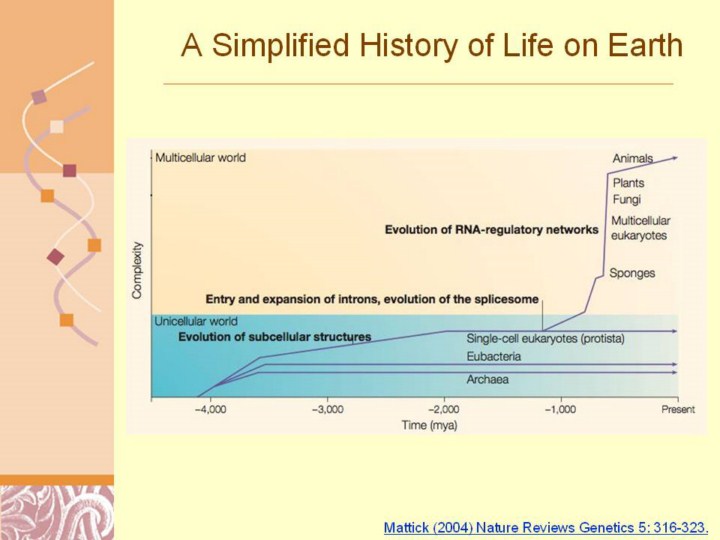| front |1 |2 |3 |4 |5 |6 |7 |8 |9 |10 |11 |12 |13 |14 |15 |16 |17 |18 |19 |20 |21 |22 |23 |24 |25 |26 |27 |28 |29 |30 |31 |32 |33 |34 |35 |36 |37 |38 |39 |40 |41 |42 |43 |44 |45 |review |
 |
Mattick (2004) Nature Reviews Genetics 5: 316-323
A simplified biological history of the Earth.This graph is intended to present an overview. Some dates are still being debated and the abscissa (‘complexity’) has an arbitrary scale. Life appeared on Earth approximately 4,200 million years ago (mya), either arising as, or quickly streaming into, three main kingdoms — the eukarya, the bacteria and the archaea. Life remained unicellular, or at best colonial, for at least 3,000 million years. The common ancestor of the animals, plants and fungi is thought to have arisen approximately 1,200 mya, around the time at which the mitochondria entered the lineage through a rickettsial-like endosymbiont, an event that is postulated to have also brought with it type II self-splicing introns75. Whether or not these events were coincidental, the incidence of introns (and other non-coding sequences) correlates with the complexity of the organism after that point. In the Cambrian period (~520 mya), complex animal life exploded in an event known as the metazoan radiation, in which recognizable ancestors of all modern phyla appeared only in a single strata of rock78. What restrained the appearance of organized multicellular organisms for so long? Was it environmental or biochemical factors (such as oxygen tension and oxidative energy metabolism), or a primitive genetic operating system? |